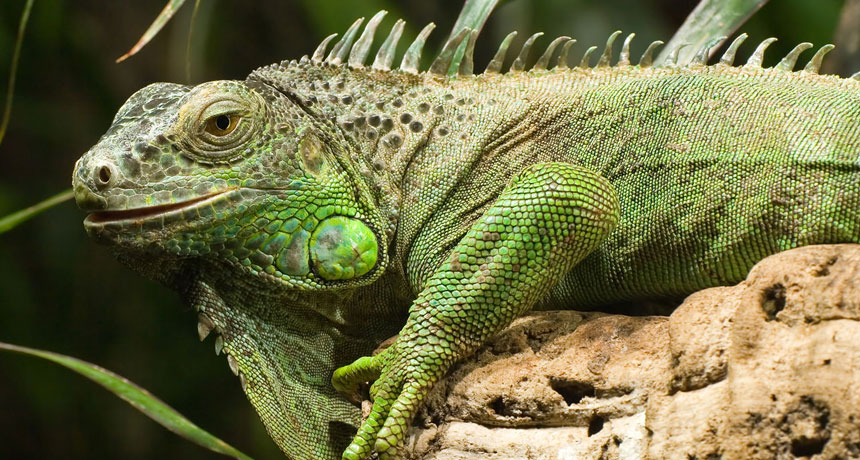Iguanas’ one-way airflow undermines usual view of lung evolution
Not just active birds but sedentary lizards with simple lungs have unusual breathing dynamics

FANCY BREATH A green iguana’s lungs manage sophisticated one-way air flow with deceptively simple structures.
Christian Mehlführer/Wikimedia Commons (CC BY 2.5)






